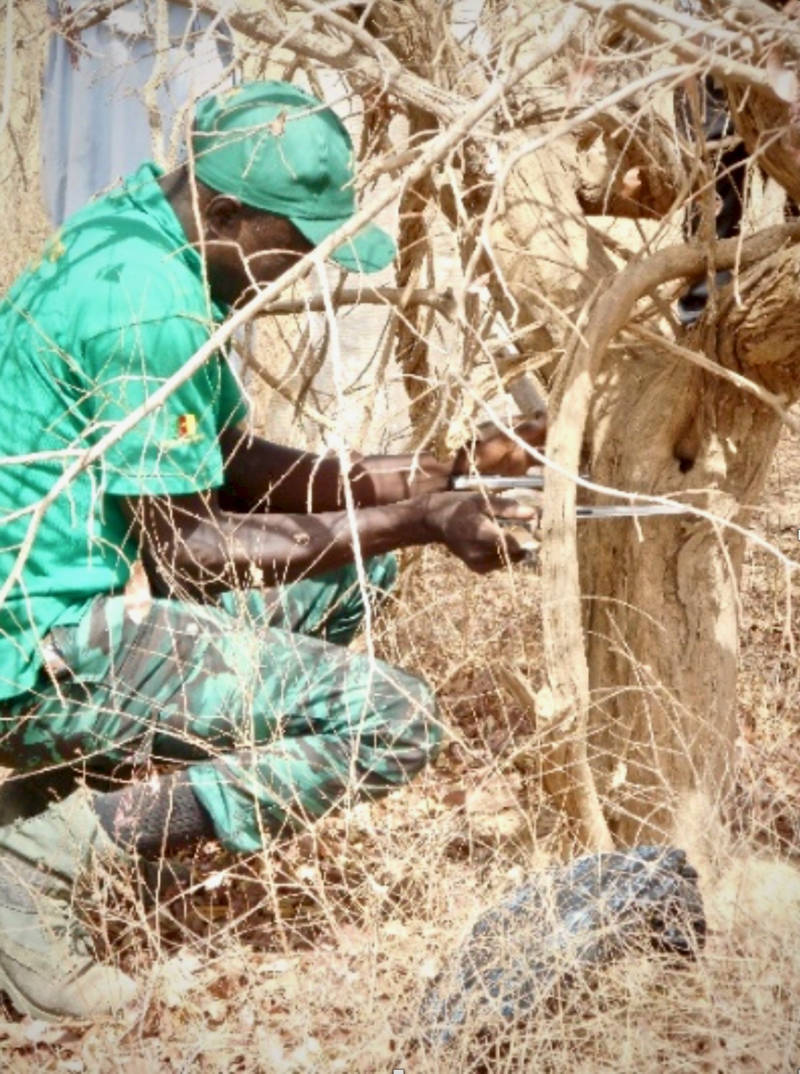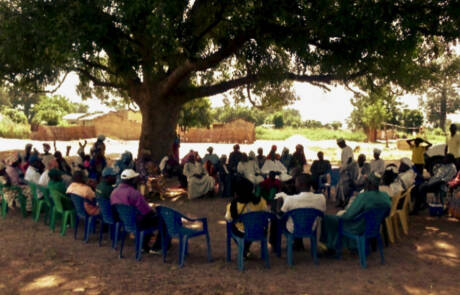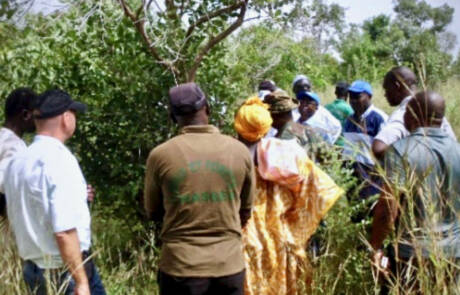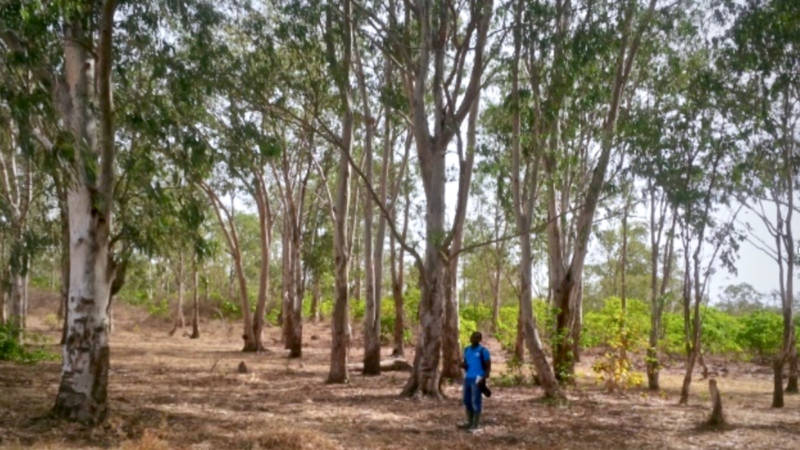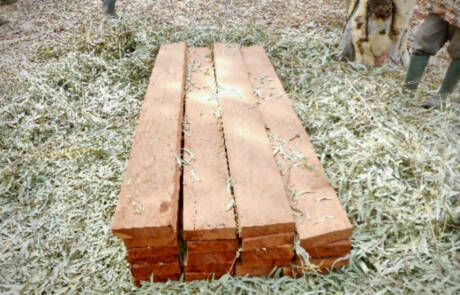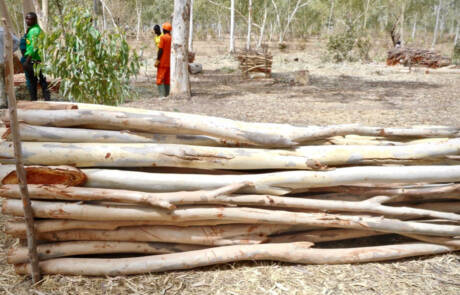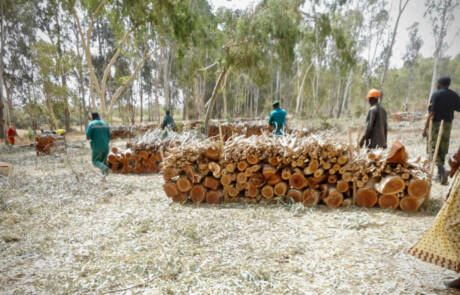How to Achieve Sustainable Management of Dry Forests in Cameroon
Global restoration initiatives for climate change mitigation actions and livelihood options
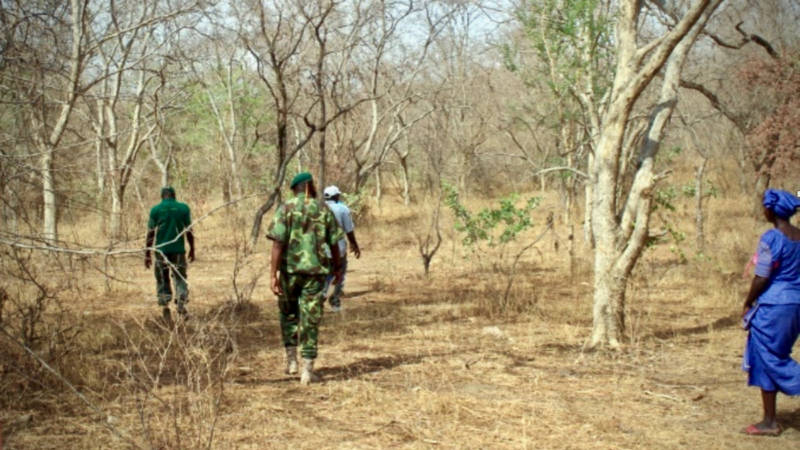
Photo: © GIZ
Covering an area of approximately 475,442 km², Cameroon’s territory is characterized by ecosystemic and floral diversity. There are freshwater, marine and coastal, semi-arid, tropical wooded savannah, mountain and dense tropical rainforest ecosystems. The eco-climatic gradient changes rapidly as one moves up in latitude. The northern part of the country, marked by a fragile ecology, is one of the areas most affected by natural resource degradation issues.
Challenges in the dry forest management in Cameroon
77% of the people in the region reside in rural areas. They live of exploitating the resources of their land. Wood, for example, is the main source of household energy for more than 90% of households. The search for this precious resource, for the most part, from natural formations, is unfortunately one of the main factors that excerbate the degradation of forest cover. In addition to being a source of food, making use of dry forests for many families is a real source of income, who sometimes have no alternative to harvesting wood or other forest products.
The main types of plant formations in the dry zone are: tree savannah, tree to shrub savannah, shrub savannah, riparian forest, tree steppe, shrub steppe, savannah mosaic, crops, fallows, grasslands.
With population growth and the combined effects of climate change and desertification the natural forests are receding. A reason for government to introduce policies to safeguard, restore and sustainably manage forest areas. Participatory and sustainable forest management is one of the main strategic angles defined by the state to address the problem of forest cover degradation. However, it appears that for several years, the management of the dryland forests has been based on official standards specifically designed for dense humid forests, which clearly did not guarantee sustainability. Indeed, little attention was paid to the ecological and social specificities of drylands.
The GIZ approach and key steps of the process
As part of the support that German-Cameroonian cooperation provides to the national government, since 2016, GIZ has been supporting the public administrations in charge of forests and the environment in the sustainable management of natural resources. Modernizing the energy wood value chain in Cameroon’s northern and far north regions cannot be commenced if sustainable tools for mountain development are not available. Therefore it was urgent to develop subjects that can be useful as management approaches and tools for implementing the various ways of support to the population in order to manage forest resources in the best possible way and to better protect the environment.
Aware of the fragility of forest ecosystems in this part of the country, the need to set up a normative and regulatory framework adapted to drylands training was recognised by the stakeholders at the political and strategic level as one of the urgent actions to be undertaken.
Overall, the support provided by the Support Programme for the Implementation of the Rural Sector Development Strategy for Forests and Environment (ProPFE) of GIZ to the administrations in charge of forests and the environment focused on these steps:
- The implementation of pilot forest management experiments in the Far North Region
- The development and adoption of the national roadmap to guide the process
- Analysis by the central administration of past and current experiences of forest management in dry savannah areas through field visits and exchanges with local stakeholders
- The creation of a working group dedicated to the development of technical guidelines for the management of dryland forests
- The analysis of technical guidelines by lawyers and their transformation into a regulatory text
- The organization of a workshop to pre-validate the regulatory framework and technical guidelines
- The holding of a national workshop to validate the guidelines and regulatory text that sets out the modalities for the management of dry forests
The forest inventory protocol in dry savannah areas: one of the technical innovations at the micro level
One of the previous constraints to the management of dryland forest areas was the reliability of the methods and tools used to estimate the available wood resources. The work of the multisectoral technical group set up by the central administration made it possible to agree on the appropriate methodology for carrying out inventories of wood resources in dry forests.
A good knowledge of the real potential of a forest is an essential step and a prerequisite for its sustainable management. The inventory protocol thus adopted describes in detail the technical approach and the various tools required for forest inventory. For the management of production forests in dryland forests, the multi-resource inventory by sampling has been adopted.
In dry savannah areas, full metering, required by the farm inventory, is not possible because it would be too costly relative to the value of the resource to be exploited. Field experiments show that with a single inventory it is possible to have an estimate of the potential to be exploited. This multi-resource inventory makes it possible to count the trees of a given species, to study some of their specifics, to evaluate the other resources and services of the forest, in a space, in order to know the potential that can be developed within the framework of sustainable management. The survey system characterized by the implementation of two-compartment circular plots and counting methods are the main technical innovations introduced into Cameroon’s normative framework for forest management (Article 13 of the draft bill establishing the modalities for the management and training of the dry zone of Cameroon).
In practice, the implementation of this system is easy. It also has a lower risk of misplacement of trees inside and outside the plots compared to other types of plots (rectangular and square shapes). The proposed circular plot methodology for the inventory is suitable for both natural formation and forest plantation inventories.
Demo of the survey system
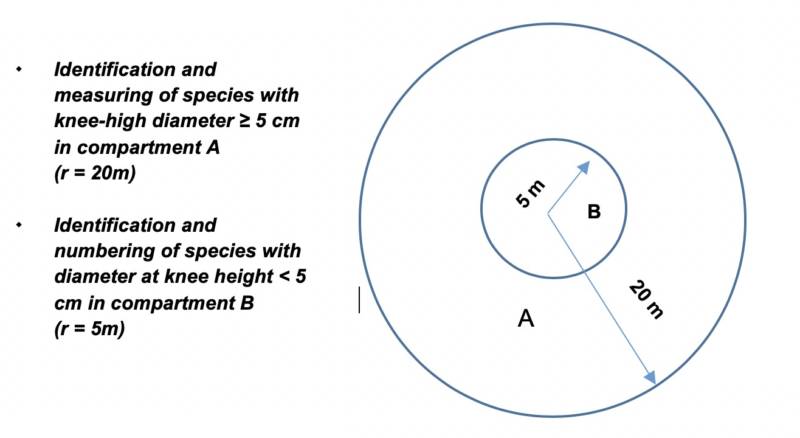
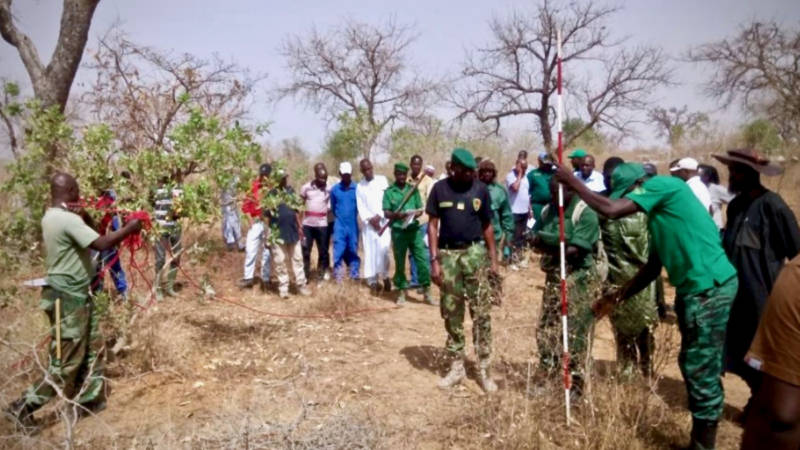
Photo: © GIZ
A reference document: national dry forest management guidelines
In Cameroon, as elsewhere in sub-Saharan Africa, firewood is the primary source of energy for local communities. For many years now, the warning signs are on red about the decline of forest formations in dry areas. The need to set up a normative and regulatory framework adapted to training for dry areas are imperative. It is critical to manage forest ecosystems sustainably while ensuring and securing access to the resource for the poorest.
The process resulted in the consolidation and adoption of a draft bill that sets out the modalities for the management of forest training in Cameroon’s dry zone. The reference document, which is subject to national validation, determines the procedures for drawing up, approving, monitoring and controlling the implementation of dry forest management plans. It includes about fifty articles divided into chapters that deal with:
- Definitions and scope
- The procedures for drawing up a management plan
- Procedures for approving and evaluating the implementation of the management plan
- Annual procedures and operating procedures
Four appendices are attached to this draft bill and concern the technical procedures for carrying out pre-management studies (socioeconomic studies), mapping, inventories and forestry operations.
These guidelines are particularly important as they provide a frame of reference and establish clear rules on the definition of and compliance with management principles to ensure the sustainability of the forest resource and the sustained yield of their exploitation. They are both an important instrument for creating favourable conditions for the sustainable supply of wood and non-timber forest products to local populations, forest regeneration and wealth creation in the northern part of Cameroon.
Success factors
The process of drawing up the technical guidelines has benefited from the great commitment of the political actors in charge of forest management and a very favourable environment for consultation and sharing of experiences. The success factors of the process are:
- South-South exchanges of experience, in particular through organizing a study tour to Senegal, which was undertaken by forestry administration executives and experts. Among other things, this study tour made it possible to draw important lessons on the political and institutional framework within which participatory and decentralized management of silvopastoral areas in Senegal is carried out, the methodologies for inventory, socio-economic surveys and the framework of the development plan used. The agro-ecological similarities detected between the drylands of the two countries strongly guided the choice of Senegal as a destination.
Photos: © GIZ
Some images of the field visits carried out in the classified forest of Dankou and the protected forest of Sambandé (Senegal)
- The initiation of a dialogue between local actors and the central authorities concerned by the process, with the aim of ensuring complementarity between local interventions and the process of drafting national policy documents on forest management. Consultations between stakeholders at both levels have made it possible to highlight the various gaps and constraints observed in the application of the current regulatory framework for the management of forests in the dry zone, and to propose a new one, which takes into account local specificities.
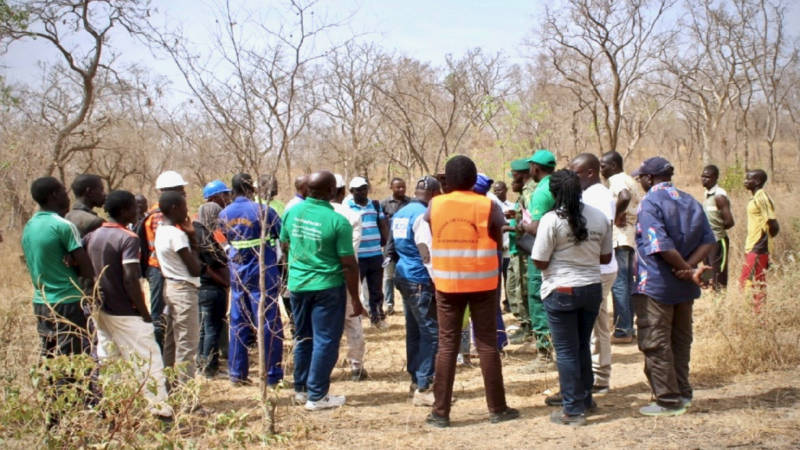
Photo: © GIZ
- Support for meetings of thematic sub-groups set up by the forestry administration to develop new technical guidelines and regulatory framework.
The future prospects
Faced with the visible degradation of forest resources in dry savannah areas, and in a current context marked by a deficit between supply and demand (estimated at -26% in 2012 for the Far North Region), the dissemination of the new regulatory framework and the various technical guidelines for the management of dry forests will certainly help to provide some solutions.
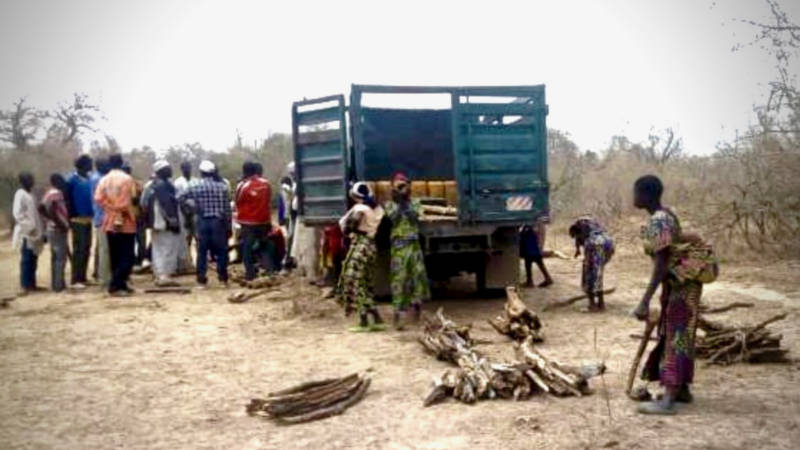
Photo: © GIZ
More than 95% of the region’s household energy supply depends on forest biomass. The sustainable development and management tools thus developed will facilitate the sustainable production of wood in the various supply basins of the region, thus providing a response to the strategic vision of modernizing the wood-energy sector in the country’s dry zone.
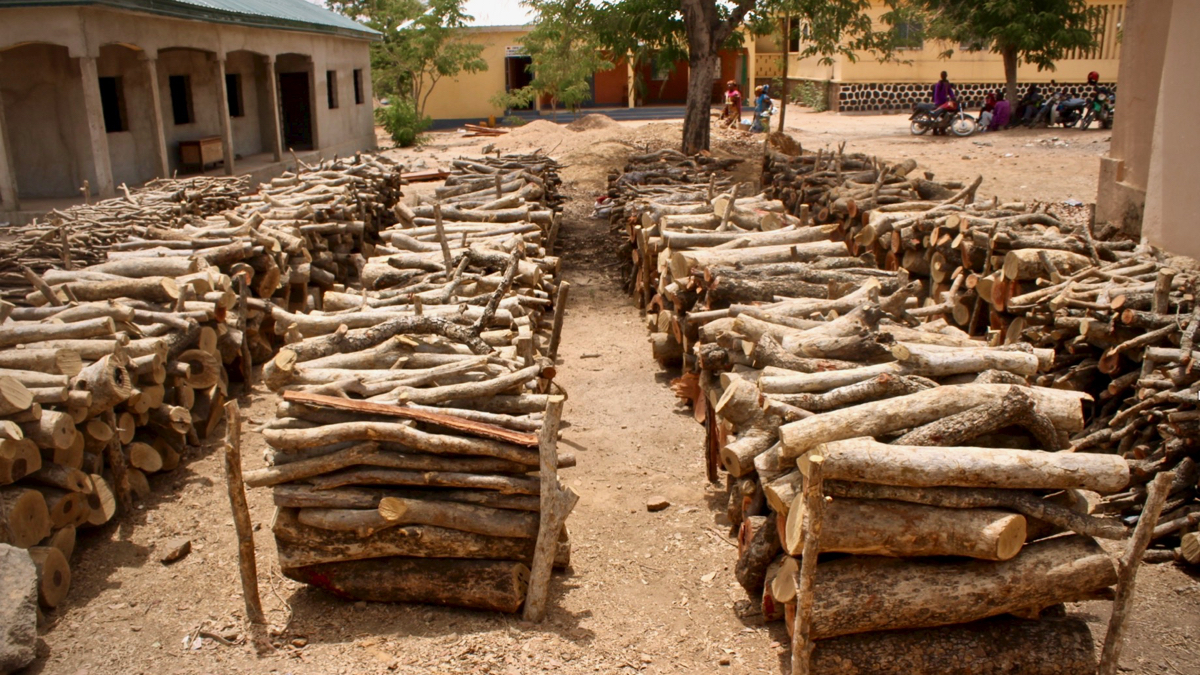
Photo: © GIZ
The results of the pilot management experiments carried out between 2016 and 2018 in two forest reserves in the Department of Mayo-Tsanaga (East of the Far North Region) can now be considered as a good starting point for changing the perception of institutional actors and local populations on the possibility of creating employment and income around forest management, as well as the need to ensure the sustainability of the resource through a participatory approach. The Mogodé (252 ha) and Mayo-Louti (2440 ha) forests, referred to above, are part of the 14 forest reserves belonging to the permanent national forest domain whose management has been transferred to local authorities (Decision No. 2002/D/MINFOF/SG/DF/CSRRVS of 21 August 2012, which establishes the list and modalities for transferring the management of certain forest reserves).
Some intermediate results from activities carried out in 2018 in the Mogodé forest reserve (252 ha)
- Annual management block n°1 (21 ha)
- Species exploited: Eucalyptus camaldulensis
- Minimum operating diameter set at 30 cm
- Number of feet operated in 2018: 96 feet
- The communal forestry unit is operational
- The local workforce recruited by the community to carry out the exploitation operations for five months
- One wood market operationalized within the community
- Main operating products marketed:
Photo: © GIZ
However, the transferred forest reserves cover only 20,709 hectares. Most of the wood production takes place in community forests or in unmanaged forests. 80% of the supply is covered by the informal sector characterized by illegal and uncontrolled exploitation of wood energy. The misuse of the right of use by local populations is associated with an uncontrolled development of a lucrative activity focused on the marketing of wood. Sustainable management is reactive and allows rapid adaptation to climate variations and challenges. To achieve this, it is necessary that these forest areas have well developed management plans.
The effective dissemination of the new guidelines for the management and development of dry forests is therefore a real opportunity for decent jobs for local populations, for improving living conditions and to ensure the sustainability of the forest resource, the importance of which is no longer to be demonstrated for the northern part of Cameroon. However, this cannot be achieved unless particular attention is paid to strengthening the organisational capacities and decision-making power of the managers of these forest areas.
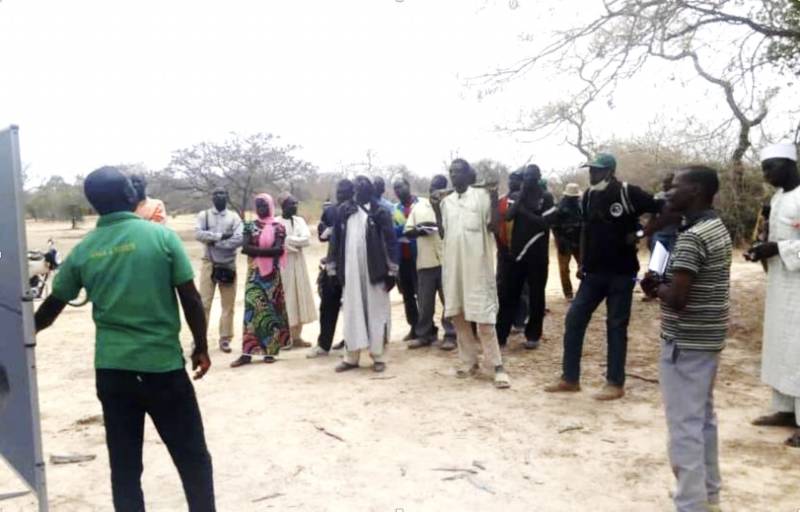
Photo: © GIZ
The authors
Haiwe Bertrand Roger and Désiré Tchigankong, GIZ/ProPFE

